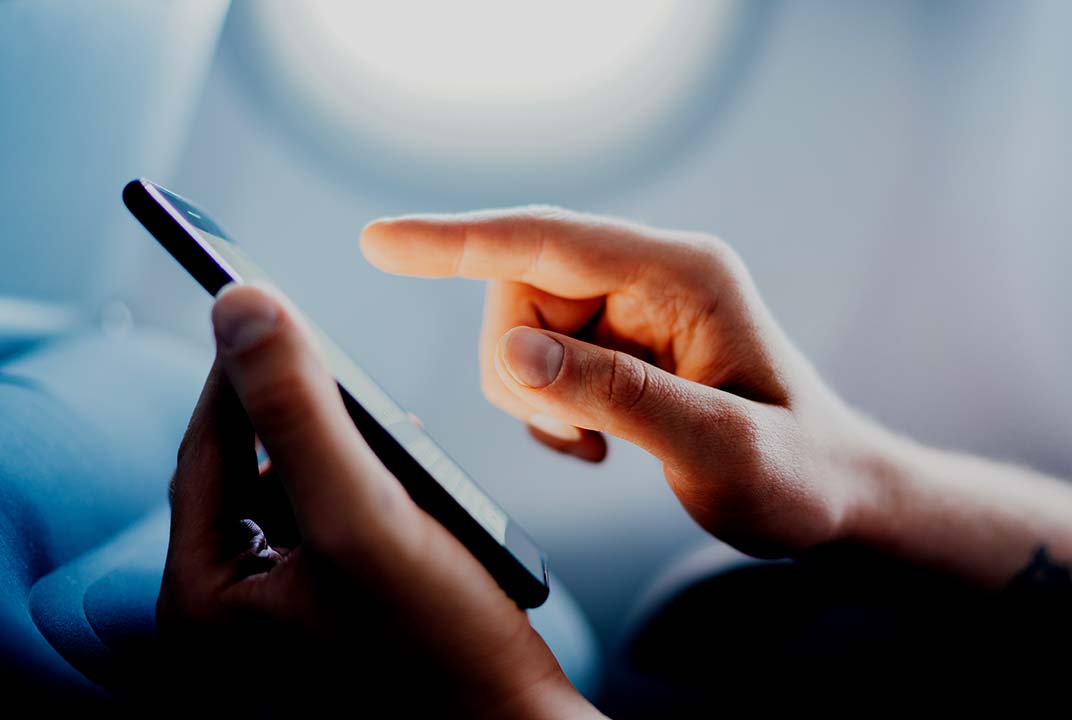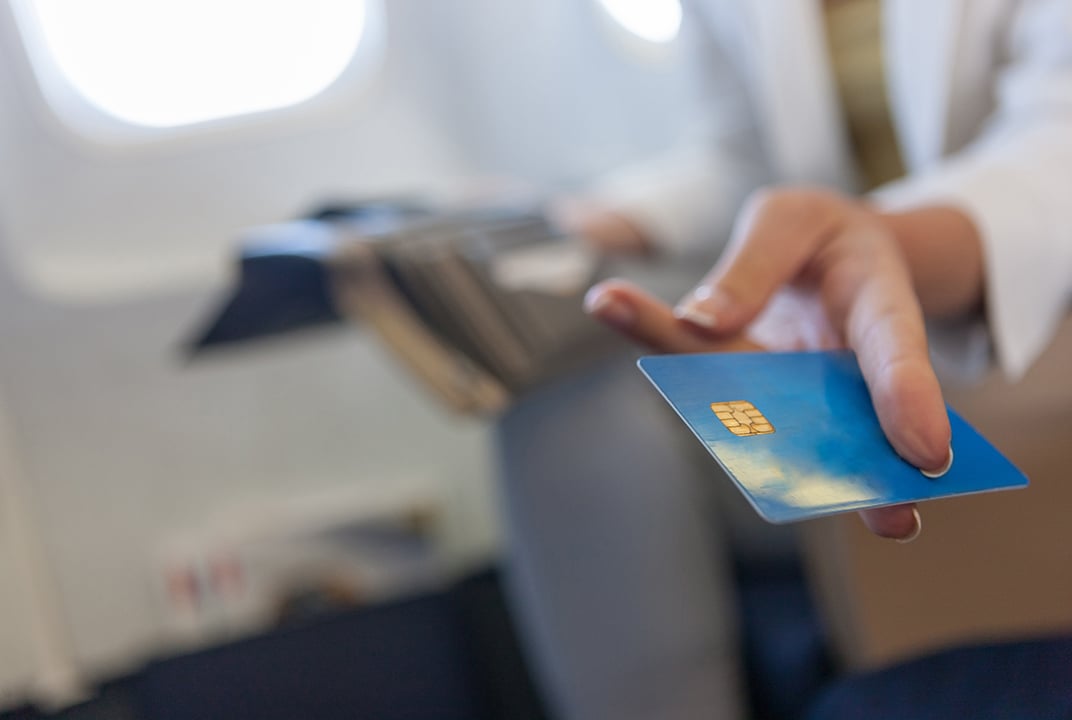Insight | Making inflight broadband pay
Making inflight broadband pay
Premium, freemium or something new? Connectivity retail models are currently being explored across the industry
High-speed inflight broadband may be the key enabler for new ancillary revenue streams, but the cost of deployment is significant and airlines are getting inventive with their business models. With next-generation technology only recently available, it’s too early to determine which retail strategy will be most effective, but current passenger offers give many options for airlines to tailor their brand positions.
Free Wi-Fi
Free inflight Wi-Fi can be a key differentiator for some and one that aligns neatly with market positioning. Although not directly an ancillary stream, Wi-Fi free of charge can drive share and preference, and serve as a platform for other connectivity-dependent revenues. Free Wi-Fi not only helps create a sense of frictionless service where passengers have little else to worry about while on board, but also creates a more positive perception of the airline.
In practice, this often means not charging passengers in business class and above, which is just how Aer Lingus, Icelandair and SAS handle it (though SAS also includes premium economy passengers). Icelandair and SAS also offer free broadband in return for loyalty programme points recognising that frequent flyers are most likely to be travelling for business, though not always in business class – and will value being able to work on board more than any other loyalty reward.
Free broadband is also being used to drive share and loyalty by budget carriers. Norwegian and JetBlue enjoy a halo effect from their free service for all passengers, with high customer satisfaction and many industry awards – not to mention strong revenue and profits in 2016.
Pay to play
Inflight broadband as a value-added service is by far the most common approach today, offering a direct return on investment. Upfront charges can be a better fit for airlines with à la carte pricing for other services. Wi-Fi is then just another line item. And nor is paid access a deterrent for passengers – Inmarsat’s Global Passenger Survey found that up to 60% of those surveyed were prepared to pay for high quality inflight broadband on long and short-haul flights.
Price models still vary widely. Flat-rates for the whole flight are simplest for passengers, but they’re not always the most lucrative for airlines – which is perhaps why few have adopted this model. Here, current prices from Icelandair, Southwest and SAS are low enough (less than €10 per session) to trigger an impulse buy, while Air Berlin and Garuda Indonesia charge more.
Tiered for choice
Conversion rates can be better managed with free trials and low-cost limited access plans. These may be enough to meet some passengers’ needs (Air Berlin and ANA offer inexpensive 30-minute plans, for example), but they’re an effective way to gain experience of passenger needs. This is particularly true when the service is as reliable as that they get on the ground – and reliability is the one thing passengers really value. Again, Inmarsat’s study found that 75% of passengers put reliability of inflight broadband before price, which is a mere 6%.
Free trials and low-cost rates also fit neatly into the tiered plans favoured by most airlines. These are already widespread in North America, where the likes of Air Canada, American Airlines, Delta and Virgin America offer time-based plans for just about everything between one hour to one month. Others have introduced bandwidth pricing, with packages providing maximum megabits per flight, much as data tariffs on the ground.
In Europe, Lufthansa has introduced an innovative three tier system based on service speed. Passengers can access the internet on the device of their choice via Lufthansa’s FlyNet portal. Three packages are available – at three varying price points – starting as low as €3 in short haul for messaging. This allows passengers to choose the appropriate tier depending on whether they want to stream videos, browse the web or just use their messaging services. Additionally, flyers can take advantage of a 10 minute, up to 10MB ‘Try Before You Buy’ service, allowing them to experience the service’s capabilities before they commit to buy.
Paying for time
There may not seem to be much difference between charging for a whole flight and charging for 24-hours’ use, but the latter can be enough for one long-haul journey and a connection or two – as long as flights are with the same airline.
Several airlines offer 24-hours’ access, including Lufthansa, JAL and EVA. In and around the US, Air Canada, American Airlines, Delta, United, Virgin America and others all offer the same, from the same broadband provider, but all also offer packages that are better suited to frequent flyers. Regular travellers tire of supplying credit card details each time they board a plane and a neater solution could be the monthly pass offered by many North American airlines.
These packages buy unlimited access on one airline, but a supplement buys access on any airline with broadband from the same provider.
Frictionless experience
Pricing isn’t the only consideration when it comes to generating revenue from Wi-Fi – it’s also about making it easy to buy. Simple and intuitive is the answer. This means aligning payment points throughout the passenger journey, from purchase with ticket, to online or in-app check-in, to airport as well as inflight. Passengers with credit card details stored on their mobile device have one less step to worry about. Simple one touch trade ups from mobile push notifications could make it simpler for passengers to pay as they go, and in the air, connectivity makes new types of closed loop payment possible, via Apple, Android or Alibaba or by linking purchase to frequent flyer schemes.
And clumsy registration systems can be as off-putting as poor connectivity. Unsurprisingly, Emirates saw take up rates increase dramatically after making its service free, but they rose again, by a further 25% in one month after the airline simplified the sign-up process.
Three-way street
Beyond free or paid, a third option is emerging – the involvement of a sponsor to fund or subsidise a free passenger service – either for a limited period or the entire flight.
The prospect of a captive audience with time to kill has obvious appeal. A sponsored service could appeal to a brand in return for prominent portal and communications signposting, or as a taster of on-the-ground entertainment or retail services.
Looking further ahead, a recent deal between Virgin America and LinkedIn means business class passengers can watch business-skill videos at LinkedIn-owned Lynda.com for no charge. This partnership may not be a paid model, but it’s only a step away – and it’s easy to see how content providers would be willing to pay for a piece of passengers’ time. It’s also a sure sign of how airlines, content providers and passengers could all soon benefit from novel approaches to making inflight broadband pay.
How an airline approaches inflight Wi-Fi has huge brand implications for the passenger experience. Their expectations of online access is now so fundamental that the availability of Wi-Fi inflight is going to be a key factor in customer choice. The industry is not simply lining up to charge for another added service. Free Wi-Fi can be an attractor and a platform to unlock alternative revenues. Lufthansa’s passengers are presented with the freedom to choose their package, which rhymes with their brand ambition to create individual customer offers.
Whatever model makes sense for each airline it’s clear that inflight Wi-Fi is an essential commercial tool for creating brand preference, differentiation and experience.


